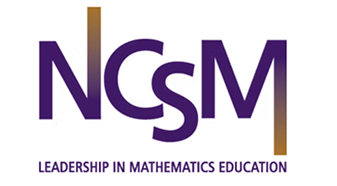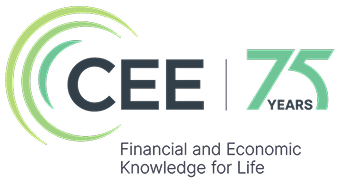Comparing variability
Examine differences between groups by analyzing measures of spread, such as range and standard deviation. Utilize visualizations like box plots and apply statistical methods, including mean, median, and standard deviation, to compare datasets, assess variability, and uncover patterns in data distributions and models.
K–2 Competencies
Describe how two things or groups are different from one another (e.g., more or less, bigger or smaller).
Classroom resources
Data Science Starter Kit Module 3: Making Sense of Data - Analysis and Modeling
Welcome to the exciting part of data science—making sense of the information you’ve collected! This module focuses on how to analyze data to find patterns, understand what the numbers really mean, and start drawing conclusions.🔗
Analysis and Modeling isn’t about complex mathematics or advanced statistics. It’s about developing the thinking skills to look at data and ask, “What story is this telling me? What patterns do I notice? What questions does this raise?” Whether students are working with simple tally marks or sophisticated datasets, the fundamental thinking is the same.
3–5 Competencies
Understand how data varies by exploring spread (e.g., range) and comparing qualities (e.g., brightness or temperature).
Classroom resources
Data Science Starter Kit Module 3: Making Sense of Data - Analysis and Modeling
Welcome to the exciting part of data science—making sense of the information you’ve collected! This module focuses on how to analyze data to find patterns, understand what the numbers really mean, and start drawing conclusions.🔗
Analysis and Modeling isn’t about complex mathematics or advanced statistics. It’s about developing the thinking skills to look at data and ask, “What story is this telling me? What patterns do I notice? What questions does this raise?” Whether students are working with simple tally marks or sophisticated datasets, the fundamental thinking is the same.
6–8 Competencies
Use visualizations (e.g., box plots) to compare variability across datasets.
Classroom resources
Data Science Starter Kit Module 3: Making Sense of Data - Analysis and Modeling
Welcome to the exciting part of data science—making sense of the information you’ve collected! This module focuses on how to analyze data to find patterns, understand what the numbers really mean, and start drawing conclusions.🔗
Analysis and Modeling isn’t about complex mathematics or advanced statistics. It’s about developing the thinking skills to look at data and ask, “What story is this telling me? What patterns do I notice? What questions does this raise?” Whether students are working with simple tally marks or sophisticated datasets, the fundamental thinking is the same.
9–10 Competencies
Use simple statistics including mean, median, range, standard deviation, etc. to compare data distributions.
Classroom resources
Is Simone Biles the GOAT? by DataClassroom
The purpose of this lesson is to help students apply advanced statistical concepts including data standardization, correlation analysis, and comparative modeling to evaluate claims about athletic performance across different time periods. Students will learn to use z-scores and statistical inference to make fair comparisons when raw data cannot be directly compared due to changing conditions and scoring systems.
Data Science Starter Kit Module 3: Making Sense of Data - Analysis and Modeling
Welcome to the exciting part of data science—making sense of the information you’ve collected! This module focuses on how to analyze data to find patterns, understand what the numbers really mean, and start drawing conclusions.🔗
Analysis and Modeling isn’t about complex mathematics or advanced statistics. It’s about developing the thinking skills to look at data and ask, “What story is this telling me? What patterns do I notice? What questions does this raise?” Whether students are working with simple tally marks or sophisticated datasets, the fundamental thinking is the same.
11–12 Competencies
Explore variability through statistical methods, such as analyzing residuals or variance in linear models.
Classroom resources
How Many Babies to Make the Average? by DataClassroom
The purpose of this lesson is to help students understand fundamental concepts of statistical sampling theory and the Central Limit Theorem through hands-on simulation of birth weight data. Students will explore how sample size affects the reliability of population parameter estimates, discover the theoretical foundations of statistical inference, and develop intuition about the practical considerations of sampling in real-world research.
Data Science Starter Kit Module 3: Making Sense of Data - Analysis and Modeling
Welcome to the exciting part of data science—making sense of the information you’ve collected! This module focuses on how to analyze data to find patterns, understand what the numbers really mean, and start drawing conclusions.🔗
Analysis and Modeling isn’t about complex mathematics or advanced statistics. It’s about developing the thinking skills to look at data and ask, “What story is this telling me? What patterns do I notice? What questions does this raise?” Whether students are working with simple tally marks or sophisticated datasets, the fundamental thinking is the same.
Advanced Competencies
Classroom resources
Support other teachers by sharing a resource
Do you have a lesson plan, video, or tip that could help others teaching this topic?
Share feedback on the Learning Progressions
Your feedback helps us improve these progressions for teachers around the world. Thank you!
Share feedback on the Learning Progressions
Your feedback helps us improve these progressions for teachers around the world. Thank you!
Share a classroom resource
Suggesting a resource helps students around the world learn essential data science skills.








.png)














